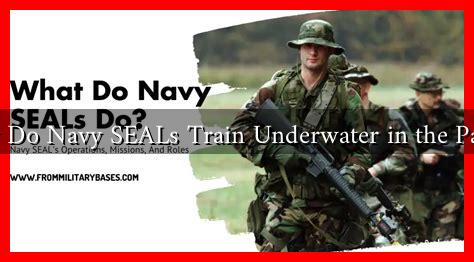-
Table of Contents
How Do Navy SEALs Train Underwater in the Pacific?
The Navy SEALs, known for their elite status and rigorous training, undergo some of the most challenging preparation in the world. Among the various environments they train in, the underwater domain presents unique challenges and requires specialized skills. This article explores how Navy SEALs train underwater in the Pacific, focusing on techniques, equipment, and the psychological aspects of their training.
The Importance of Underwater Training
Underwater training is crucial for Navy SEALs for several reasons:
- Operational Readiness: Many SEAL missions involve covert operations in maritime environments.
- Survival Skills: SEALs must be adept at surviving in various aquatic conditions.
- Team Coordination: Underwater missions require seamless teamwork and communication.
Training in the Pacific Ocean, with its diverse marine environments, provides SEALs with the necessary skills to operate effectively in real-world scenarios.
Training Techniques and Methods
Navy SEALs employ a variety of training techniques to prepare for underwater operations. These methods include:
- Combat Diving: SEALs are trained in combat diving techniques, which include using closed-circuit rebreathers to minimize bubbles and noise.
- Underwater Navigation: SEALs learn to navigate underwater using compasses and natural landmarks, essential for stealth operations.
- Demolition Training: SEALs practice underwater demolition techniques, which are critical for sabotage missions.
- Rescue Operations: Training includes rescue scenarios where SEALs must retrieve personnel or equipment from underwater.
These techniques are honed through rigorous drills and simulations, often conducted in challenging conditions to mimic real-life scenarios.
Equipment Used in Underwater Training
The equipment used by Navy SEALs during underwater training is state-of-the-art and specifically designed for their unique needs. Key equipment includes:
- Closed-Circuit Rebreathers: These devices allow SEALs to breathe underwater without producing bubbles, making them less detectable.
- Diving Suits: Specialized suits provide thermal protection and buoyancy control.
- Underwater Communication Devices: These allow SEALs to communicate with each other while submerged.
- Navigation Tools: Compasses and underwater GPS systems help SEALs maintain their bearings.
Each piece of equipment is meticulously tested and adapted to ensure maximum efficiency and safety during operations.
The Psychological Aspect of Underwater Training
Training underwater is not just a physical challenge; it also tests the mental fortitude of SEALs.
. The psychological aspects include:
- Stress Management: SEALs learn to manage stress and anxiety in high-pressure situations.
- Team Cohesion: Building trust and communication within the team is essential for successful missions.
- Adaptability: SEALs are trained to adapt to rapidly changing environments and unexpected challenges.
These psychological skills are developed through intense training scenarios that push SEALs to their limits, ensuring they are prepared for any situation they may encounter.
Case Studies and Real-World Applications
Several high-profile missions have highlighted the importance of underwater training for Navy SEALs. For instance, during the operation to capture Osama bin Laden, SEALs utilized their underwater skills to navigate and infiltrate the compound undetected. Such missions underscore the critical role that underwater training plays in the success of SEAL operations.
Additionally, statistics show that a significant percentage of SEAL missions involve maritime elements, further emphasizing the need for comprehensive underwater training. According to the U.S. Navy, approximately 70% of the Earth’s surface is covered by water, making proficiency in underwater operations essential for modern warfare.
Conclusion
Navy SEALs undergo extensive underwater training in the Pacific to prepare for the unique challenges of maritime operations. Through a combination of advanced techniques, specialized equipment, and psychological resilience, they develop the skills necessary to execute high-stakes missions effectively. The rigorous training not only enhances their operational readiness but also fosters teamwork and adaptability, ensuring that they remain one of the most elite fighting forces in the world.
For more information on Navy SEAL training and operations, you can visit the official U.S. Navy website at Navy SEALs.




